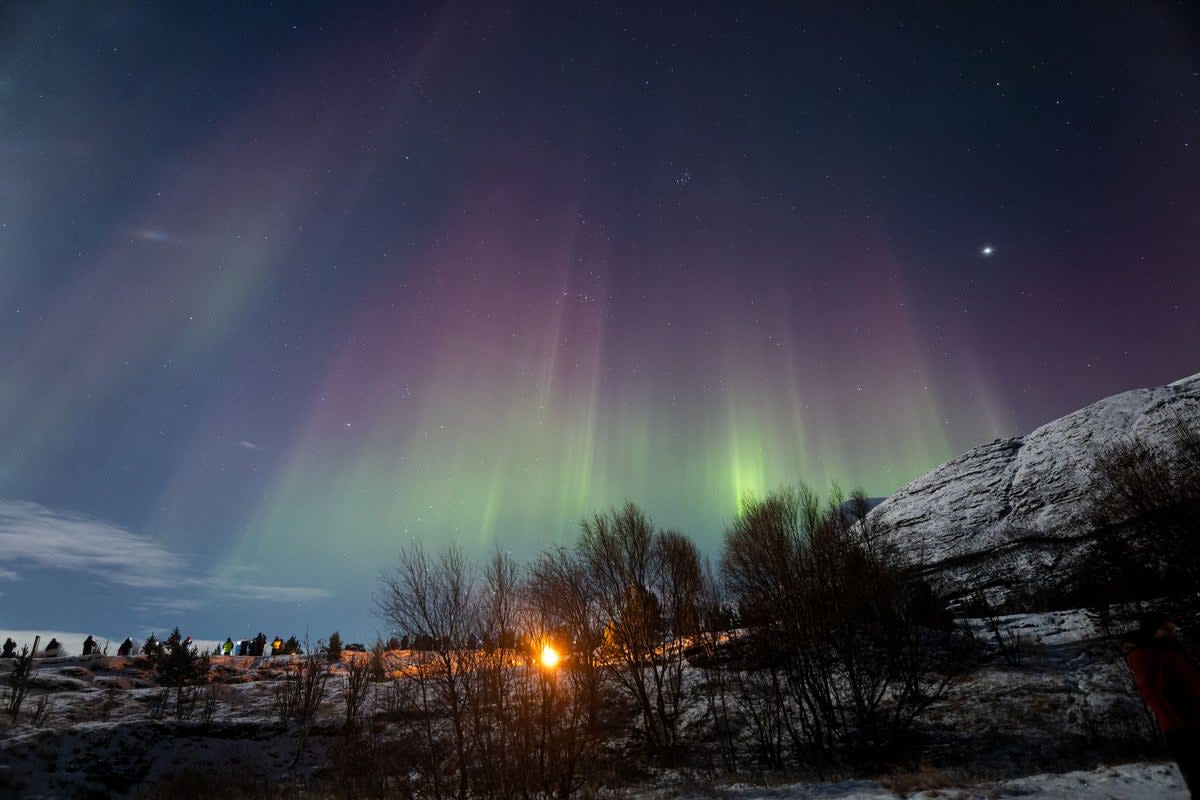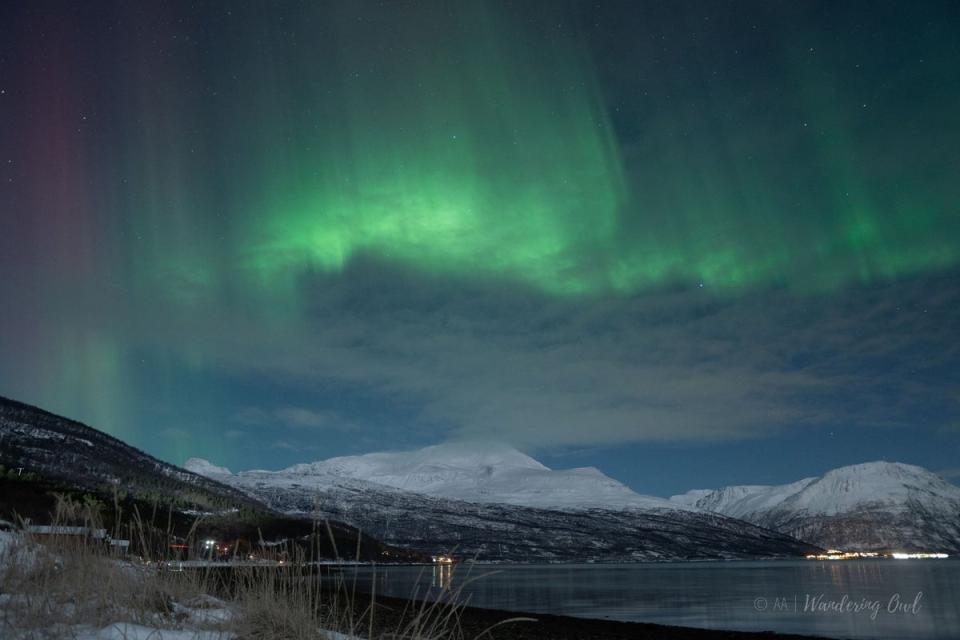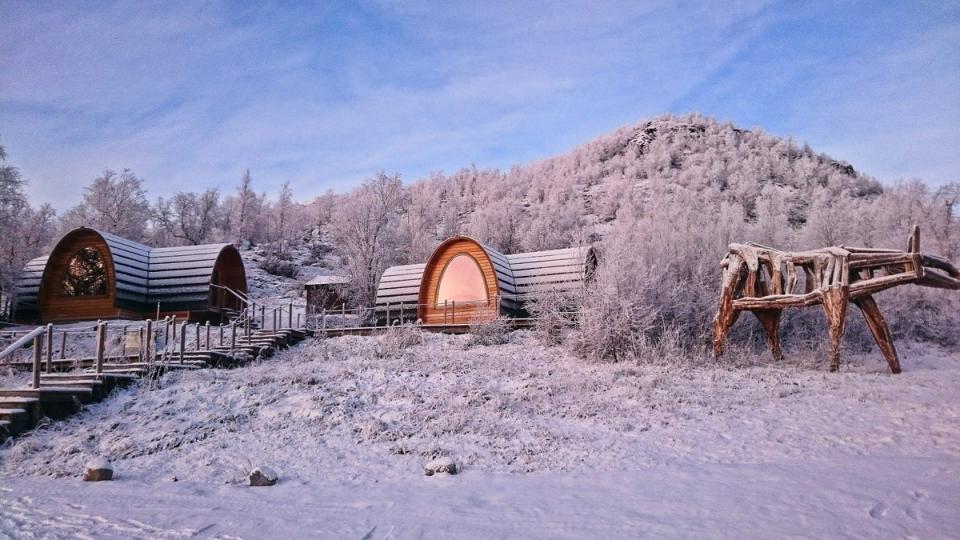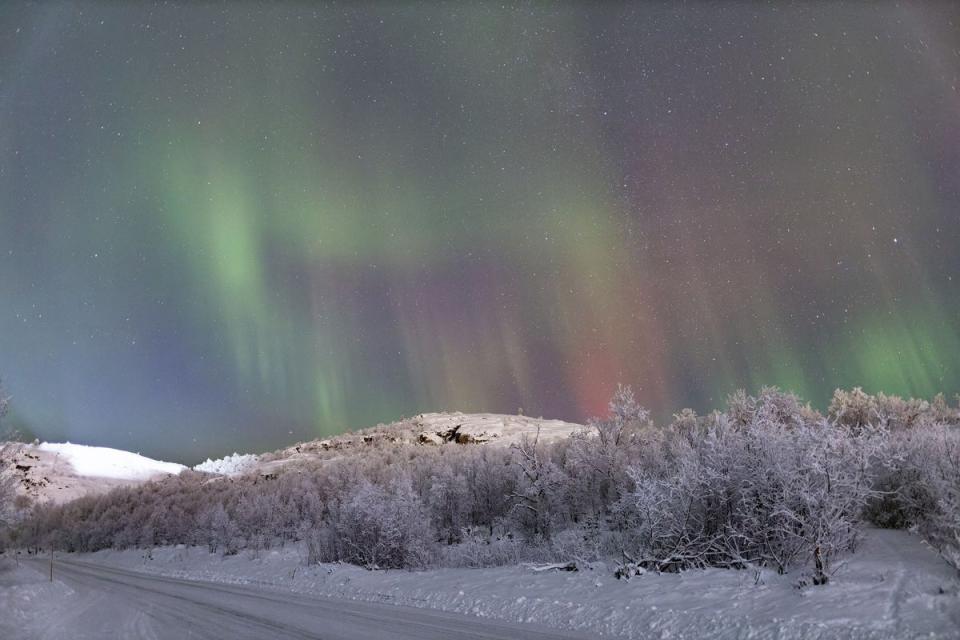Hunting the Northern Lights with a professional aurora chaser

The night sky was alive with colour. Great curtains of green, lilac and magenta were moving with silent majesty directly above my head, spanning my entire field of vision, from the frozen fjord at my feet to the snow-muffled mountains at my back. It felt as if I was actually inside the aurora. I put my phone back in my pocket; no picture could adequately capture that feeling of sheer awe. Better to soak it all in.
I was left in no doubt why the Northern Lights make it on to every travel bucket list. Hitting the sweet spot where science and spirituality meet, there’s a sense of magic to their luminous, slowly-shifting presence that’s only increased when you understand their origins – that the particles creating these colours came all the way from the surface of the sun. Plunging into our atmosphere around the magnetic poles they collide with atoms and release their energy as light, with dazzling results.
My experience, of an all-encompassing ‘corona’ overhead, was spectacularly lucky. “I’ll see something of that quality about once a year,” revealed Tom Kerss as we walked back to the van, our boots crunching through the snow. And that’s saying something. As an astronomer, professional aurora chaser and author of Northern Lights: the Definitive Guide to Auroras, Tom spends from September to March every year on the hunt for them.
We’d come to Tromsø, a charming small city high above the Arctic Circle in northern Norway. At this time of year it feels pleasingly festive – all twinkling lights, mulled wine and reindeer hot dogs. With relatively low levels of cloud cover, it’s also one of Tom’s favourite places to see the lights.

The excitement had been building since the afternoon. After a fascinating few hours at Tromsø’s Northern Lights Planetarium, learning about the science of the auroras, we’d emerged into the gloaming and Tom had checked the space weather to find a massive geomagnetic storm in progress, probably the result of a coronal mass ejection – no sniggering at the back – where vast quantities of charged particles are thrown out from the sun, cause auroras of exceptional brightness and scale. Six hours later, under clear skies on the shores of the Lyngenfjord, that’s exactly what we got.
The good news is that for the next few years, you’re more likely to be spectacularly lucky, too. The sun moves through an 11-year cycle, growing more and more active until it hits the solar maximum, a period where it pumps packets of particles out into space with phenomenal regularity and displays of the Northern Lights are set to be at their best. The maximum is just about to hit, so if seeing the lights is on your bucket list, go in 2024 or 2025.
And while the auroras can sometimes be seen further south – even appearing over Stonehenge last month – you’ll maximise your chances by going as far north as you can, which in Europe means Norway. Its crenelated northern coast arches over the 69th parallel, comfortably located inside the auroral oval even when it’s at its weakest, so you don’t need unusual space weather conditions to see the lights, just clear skies. It’s less cloudy than Iceland and less frozen than neighbouring Finland, with the sea keeping temperatures higher. The coast is dotted with excellent places to observe the lights all the way round to Kirkenes, close to the Russian border, where I saw the aurora dance deep green right over the roof of the Snowhotel, popping out to catch the display between courses of Arctic char tartare and reindeer steak.

You don’t even need to drive in snowy conditions – simply board one of Hurtigruten’s ships and hop from port to port. This Norwegian maritime institution is a hybrid, ferrying locals and freight as well as tourists between the towns and cities, making it feel far from the stereotypical cruise – although you’ll find cosy cabins, locally-sourced cuisine and the first fizz aged in an Arctic wine cellar, 34m below the waves – on board.
Sail on one of its Astronomy Voyages and you’ll even have access to your own aurora expert – Tom, or one of the line’s other astronomers, who’ll explain the science of the lights, give masterclasses in photography and teach you more about the Arctic sky. Hurtigruten is so confident you’ll see the auroras on these 12-day trips from Bergen to Kirkenes and back it offers a Northern Lights promise – a free sailing next season if you don’t. If you’re short on time, there’s the three-day Tromsø to Kirkenes itinerary. With alerts sent to the cabins through the night, you can rush on to the deck as soon as the lights are sighted. They’re not so fleeting there’s no time to bundle up warm, however. I spotted a fellow passenger in flip flops – it was -13C. The Northern Lights are magical, but they can’t prevent frostbite.
A 12-day Astronomy Voyage accompanied by Tom Kerss sailing round-trip from Bergen departing September 28, 2024 starts from £2,942 full board. Three-day Tromso to Kirkenes trips start from £194. hurtigruten.co.uk

Tom Kerss’ Top 5 Aurora hunting tips
1. Time it right
Book your trip to coincide with a new moon – this will give you the darkest skies and make even the faintest lights visible to you. For an extra boost, travel around the equinoxes – late September and late March – as the lights are a little more active then.
2. Go north
The further north you go, the less aurora strength matters, so find a spot above the Arctic Circle. Choose somewhere with average cloud cover below 50%. Check this on weatherspark.com
3. Minimise interference
When finding a location to see the lights, head north, east or west from the city, so that any light pollution will be in the south, away from the auroras in the north.
4. Combat the conditions
Wear warm, waterproof clothing and bring a thermos with a hot drink and a torch or headlamp with a red-light mode to preserve your night vision.
5. Capture the moment
You don’t need to buy a camera. Today’s recent phones are marvellous at low-light photography, but do turn your screen brightness down so you don’t dazzle yourself, and disable the flash.

